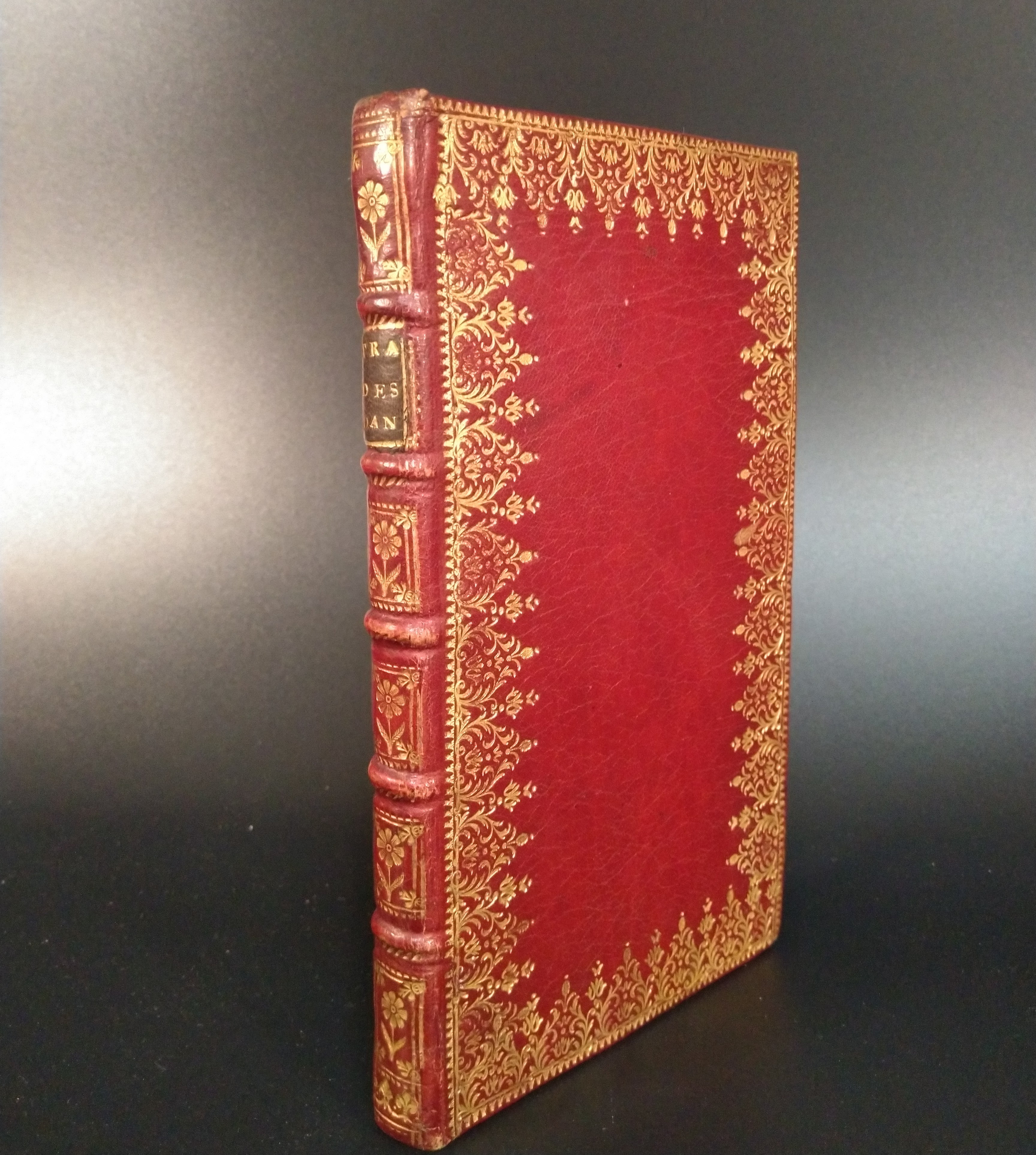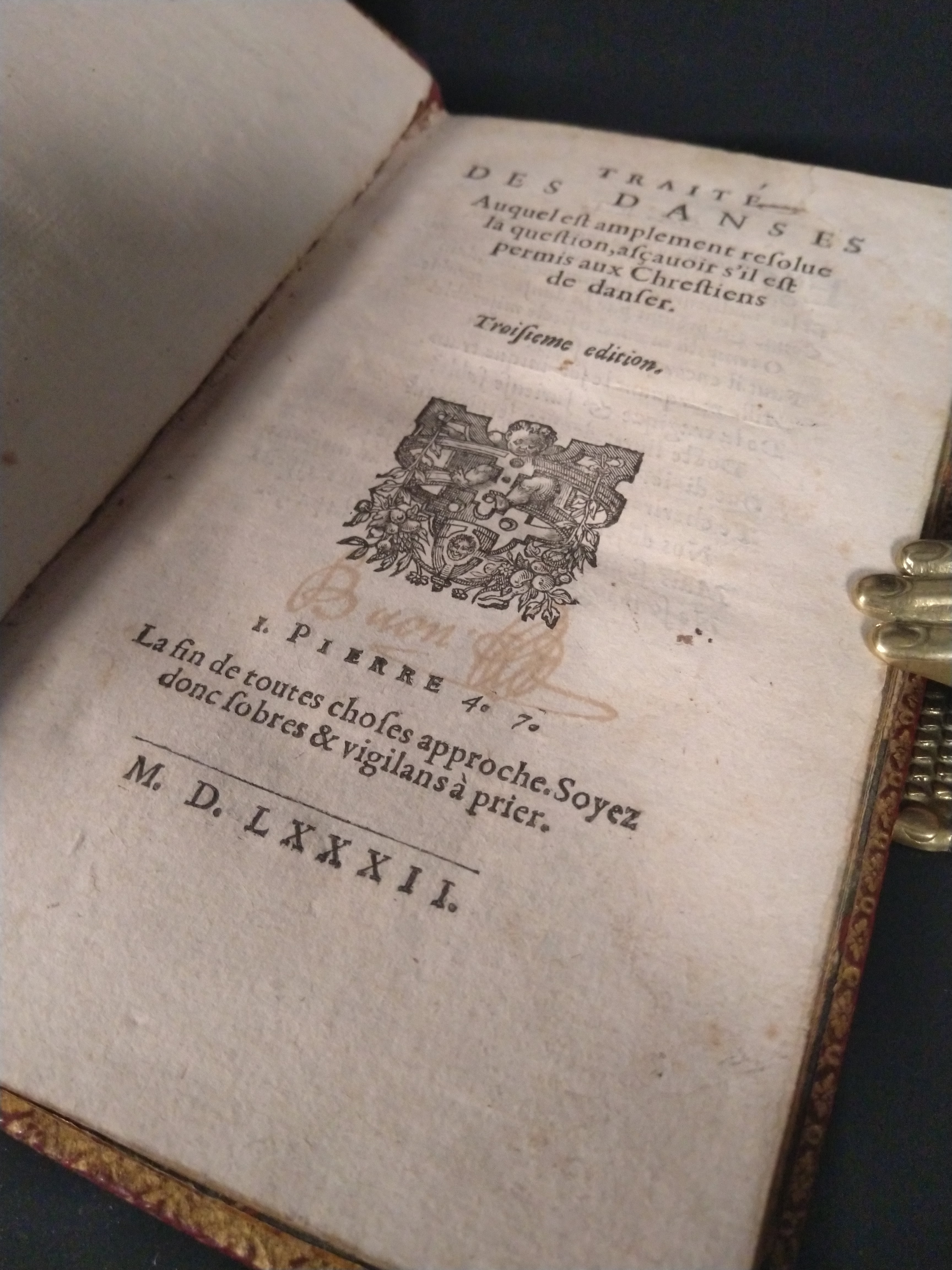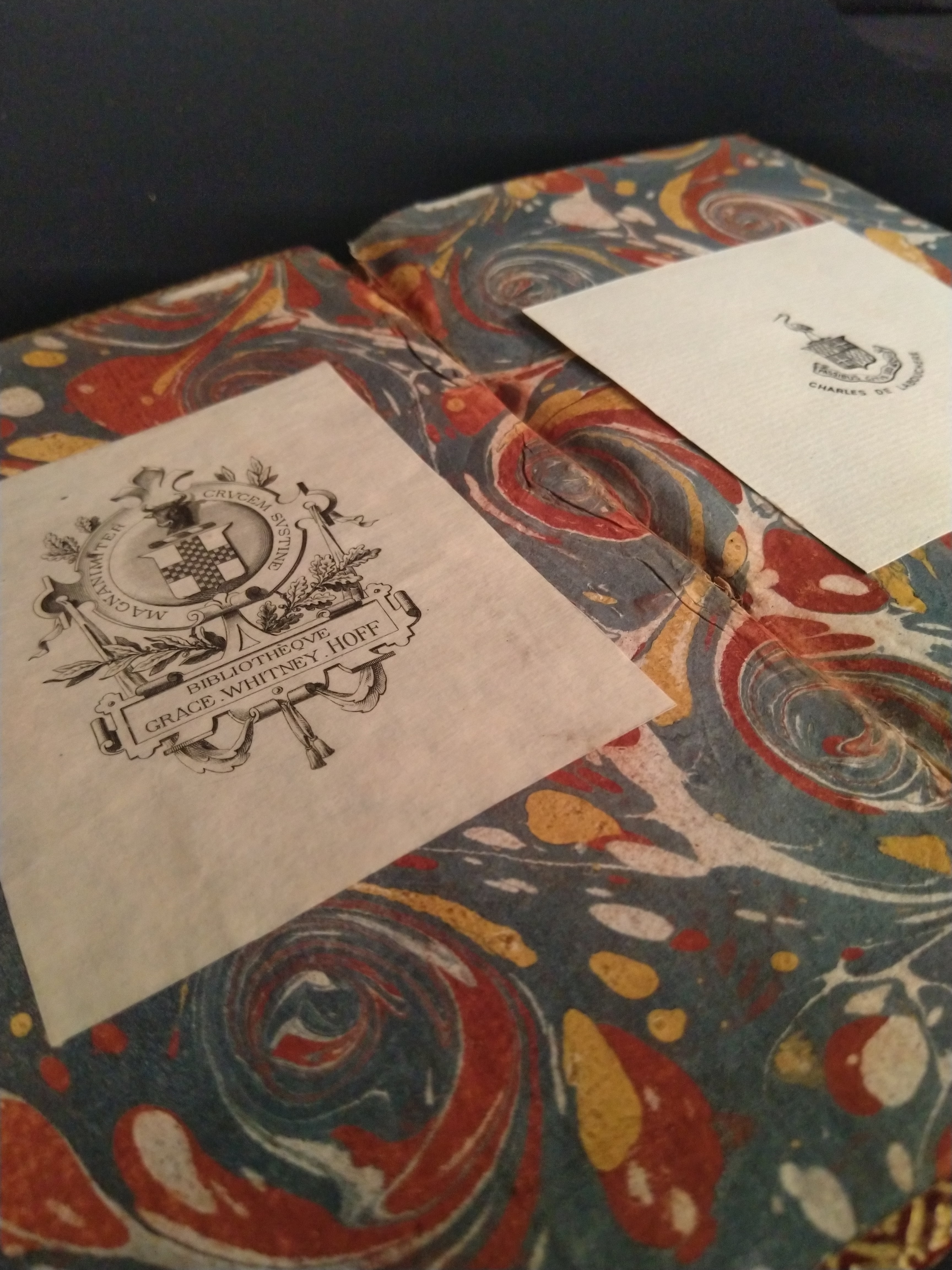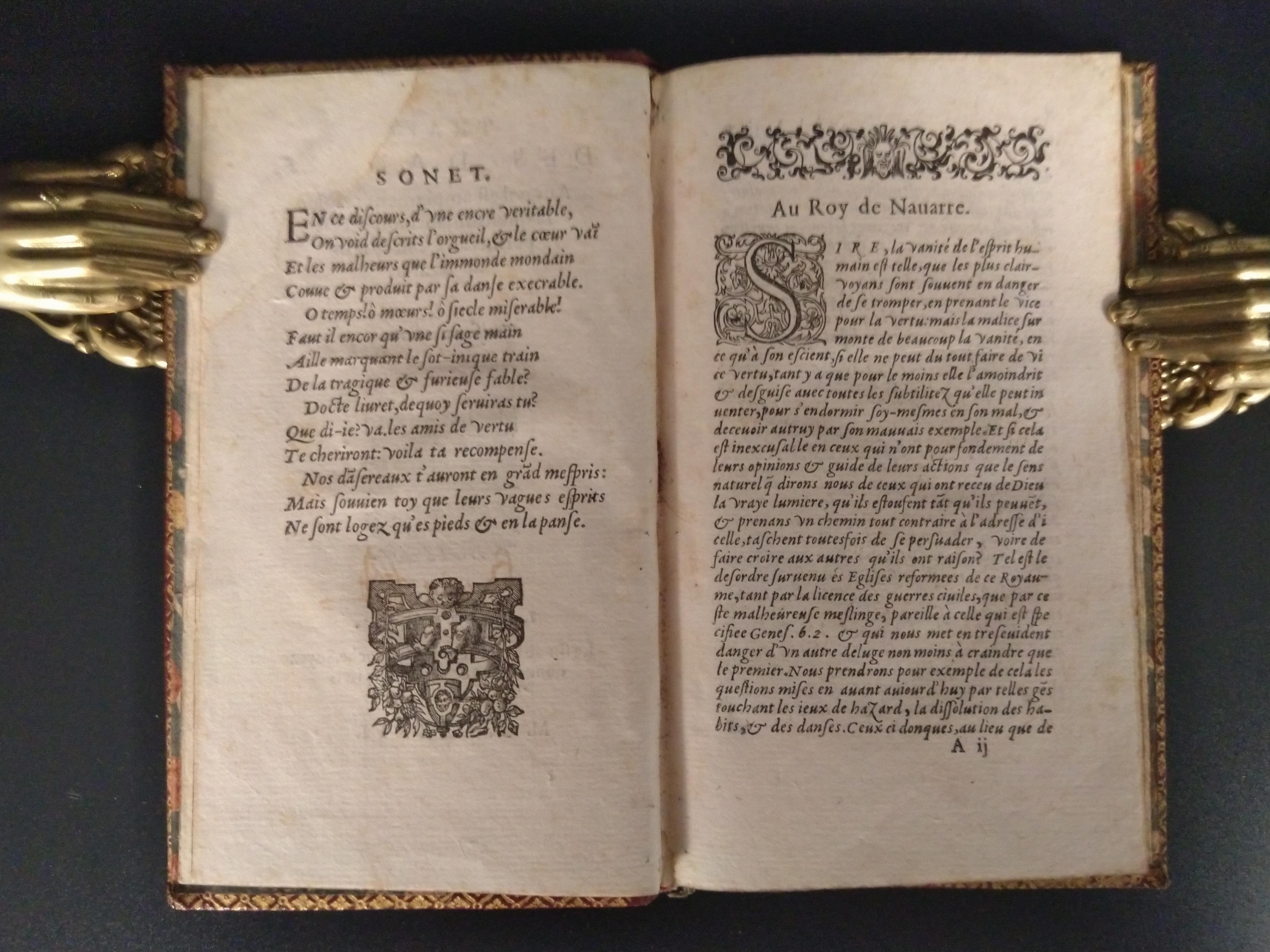[DANEAU, Lambert.]
Traite des danses, Auquel est amplement resolue la question, asçauoir s’il est permis aux Chrestiens de danser.
[Geneva], nn., 1582£4,250.00
8vo. pp. 97 (iii). A-F8, []2. Roman letter, some Italic, small woodcut printers device on title, repeated on verso, floriated woodcut initials and headpieces, autograph “Buon” on title repeated twice on last leaves, engraved armorial bookplate of Grace Whitney Hoff on pastedown, and of Charles de Labouchère on fly. Light age yellowing, some minor spotting in places, upper outer corner of title page torn and restored with one letter replaced in manuscript. A fine copy in excellent red morocco c. 1700, covers bordered with gilt rule and wide dentelle border, spine with raised bands, gilt in compartments with large fleurons, green morocco label gilt, edges and inner dentelles gilt, a.e.g. six pale blue blank ll. at end.
Third and last edition of this important and interesting treatise on dancing by the renowned Protestant theologian Lambert Daneau, first published in Geneva in 1579, giving tremendous insight into attitudes to the the forms and nature of dancing in the C16th. The author refutes all arguments in favour of dancing which he associates with the work of Satan. It commences with three sonnets condemning dancing and a dedication to the protestant King of Navarre, later Henry IV. The work was widely read in England where its arguments were most influential particularly amongst the Puritans, for instance in Philip Stubbs ‘Anatomie of Abuses’ which contains a lengthy chapter on dancing, which he describes as “an introduction to whoredom, a preparative to wantonnesse.” Daneau was a close follower of Calvin in his attitude to dancing. “Nor did the campaign to suppress dancing end with Calvin, for in 1579, fifteen years after his death, we find a lengthy treatise on the subject published in Geneva by Lambert Daneau. The book was offered, in the name of the Ministers of the Reformed Church to the King of Navarre. The preface describes the moral disorder which, partly as the result of the religious wars, reigns in the protestant communities of the day; amongst the evils most rampant are gambling and dancing. The latter, in particular, the author declares, has been much defended by its supporters who, instead of accepting the recommendations of their ministers, persist in putting forward all kinds of arguments in its favour. It is clearly hoped that the ‘Traité des Danses’ will be accepted as a final convincing refutation of these protestations, for “nous condamnons les danses, & desirons de les bannir entierement du milieu de nous” We are accordingly treated to a very full exposition of the Calvinist attitude towards dancing and, to a lesser extent, of the arguments traditionally advanced in its defence. … In the first place, Daneau specifies that the dances he is attacking are not the sincerely religious dances mentioned in the Bible, but the kind currently practised .. .What particularly offends and disturbs the Calvinists in contemporary dancing is the fact that it is ‘mixed’. Such dancing, asserts Daneau, is wholely the invention of the Devil who, under the cloak of pleasurable entertainment, kindles the lecherous desires of men and women. Light and salacious conversation is pernicious enough; but when the bodies come into such close contact, it is but a small step to the final perdition of the soul. Every dance offers opportunities for caresses and increases the dancers lustfulness. The gay atmosphere helps to foster this abandonment of all restraint, and not only the dancers, but also the onlookers, are in spiritual danger. In addition, all kinds of instruments, designed for a nobler purpose, are used to present the devilish poison the more temptingly. Nor is that all; for the dances are as a rule accompanied by lewd songs.” H. P. Clive. ‘The Calvinists and the question of dancing in the C16th century.’ A beautifully bound copy very much in the style of ‘dentelle bindings’ done in the atelier de Luc-Antoine Boyet, though the tools used here do not exactly match the tools tools used in his atelier.
From the library of the American, bibliophile, philanthropist and feminist Grace Whitney Hoff. The contemporary autograph could perhaps be that of the French printer Gabriel Buon.
USTC 10115. Barbier IV p. 776. Not in Gay or Erdmann.In stock







